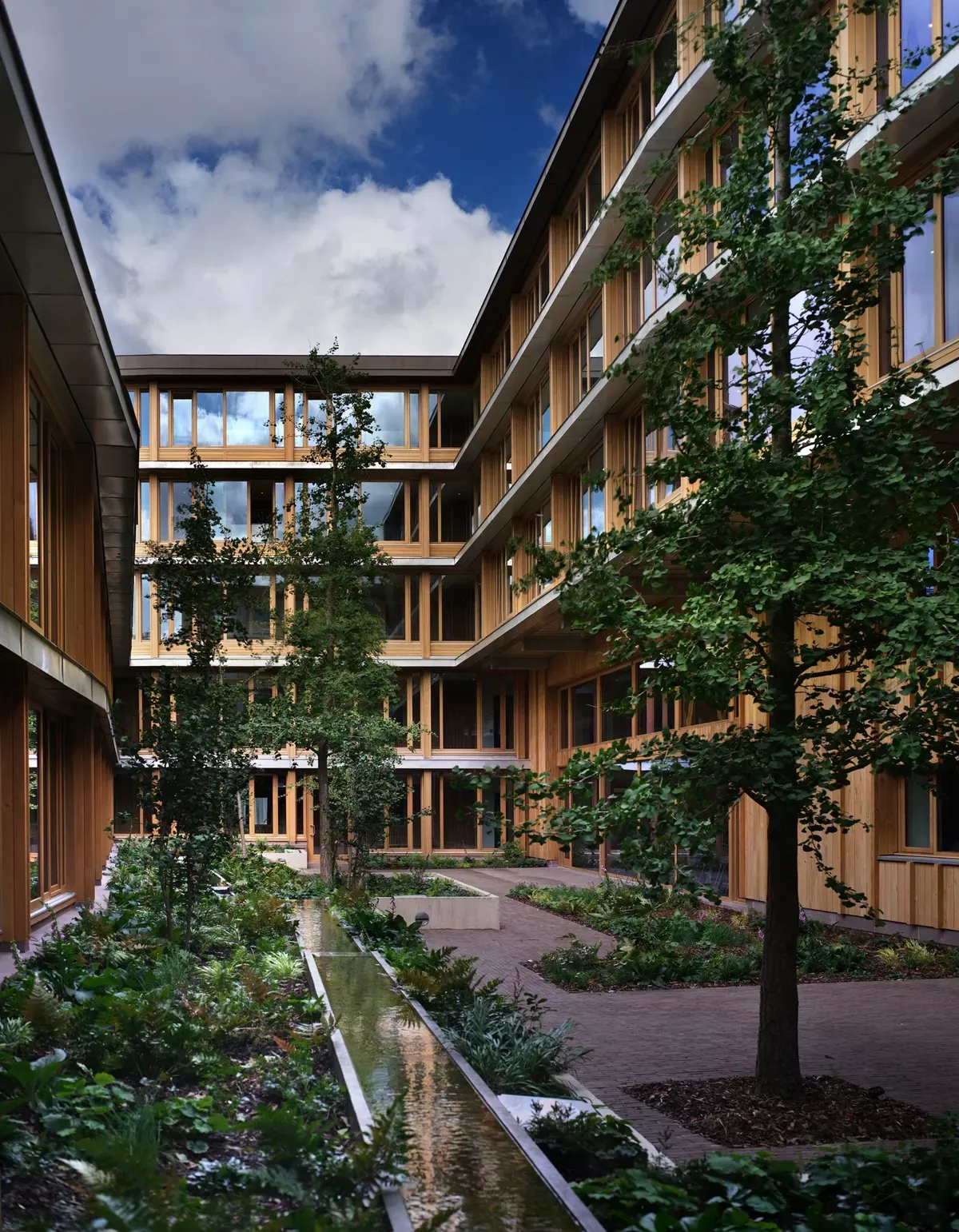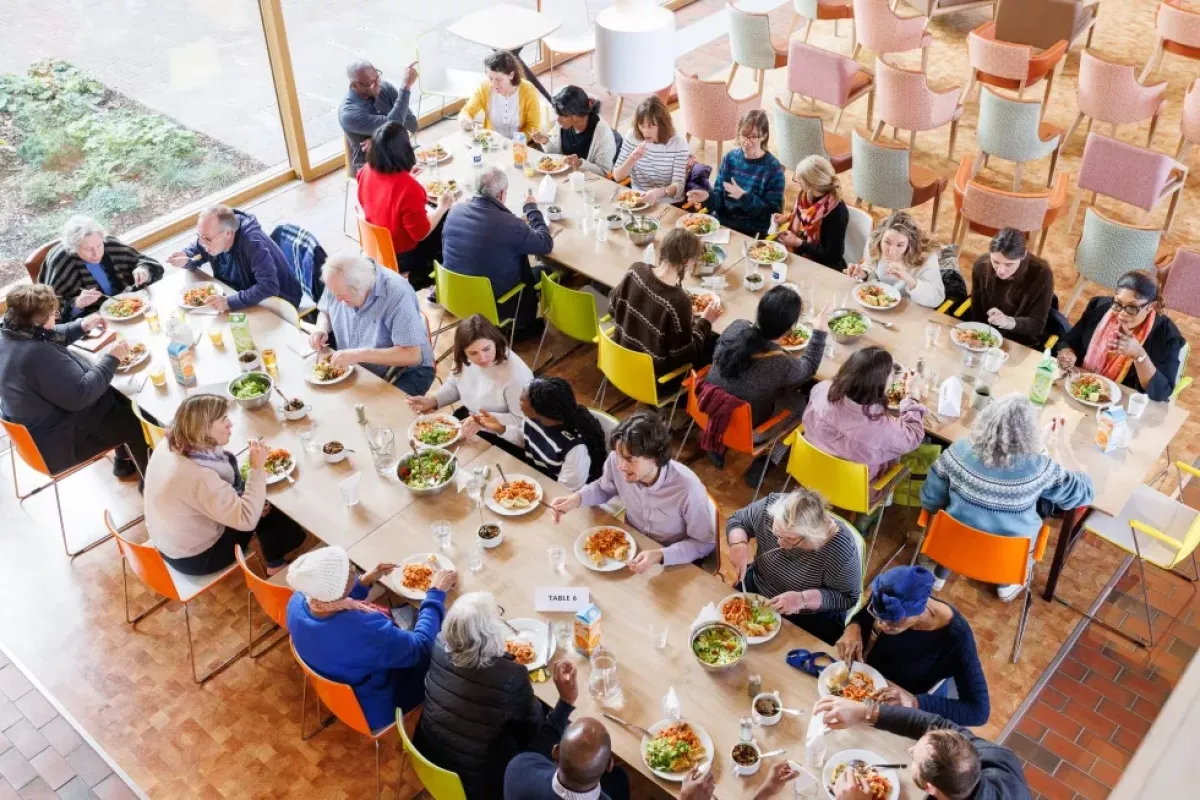Britain’s top architecture prize winner redefines senior living
Britain’s best new building is a modern take on one of the country’s oldest housing traditions. The Appleby Blue Almshouse in Bermondsey, London, has won the 2025 Royal Institute of British Architects (RIBA) Stirling Prize, recognised for bringing social connection and dignity to senior housing.
Designed by Witherford Watson Mann Architects for United St. Saviour’s Charity, the five-story complex reimagines the centuries-old almshouse — historically a quiet refuge for low-income seniors — as an open, community-oriented space that combats loneliness and isolation, Bloomberg writes.
Located on a busy street in south London, the 5,800-square-meter development includes 57 flats for residents aged over 64, alongside shared social spaces open to the wider community. These include a library, hobby room, and a communal kitchen and dining area.
“Because we wanted a place where people of all ages would come together, we made it very clear to the people wanting to live here that the community space will be there for the whole community,” says Martyn Craddock, chief executive of United St. Saviour’s Charity. “It won’t be a quiet residential lounge where you can just sip a cup of tea in a corner and read a book; you’ll likely hear some kids in the background somewhere.”
Residents pay around £200 a week, a fraction of Southwark’s typical rents, and must meet age, income, and residency requirements.

Architecturally, the building combines traditional almshouse design with contemporary urban sensibilities. Its horseshoe-shaped layout wraps around a sunlit courtyard filled with greenery and water features, while a shorter rear wing adds a rooftop terrace with fruit trees and garden beds.
Large bay windows along the street level encourage interaction between residents and passersby, while “social corridors” inside — lined with benches and planters — foster casual encounters among neighbors.
RIBA jury chair Ingrid Schroder, director of the Architectural Association School of Architecture, praised the project’s blend of design quality, sustainability, and social purpose.
“Within the criteria, we’re looking for something that is distinguished in its architectural expression,” she said. “They're very visible, they’re lively, they are part of an active environment, which I think is absolutely critical and really warmed our hearts when we visited them.”

This marks Witherford Watson Mann’s second Stirling Prize, following their 2013 win for transforming a 12th-century castle into a modern home.
Appleby Blue also reflects a growing awareness of how design can combat the loneliness epidemic. More than 4.3 million Britons over 64 now live alone, and studies show social isolation can worsen health outcomes.
Research from United St. Saviour’s Charity and Bayes Business School found that almshouse residents live up to 2.4 years longer than peers of similar backgrounds, with communal dining and shared spaces linked to better wellbeing.
“What we focus on is: What is it about almshouses that contributes to not necessarily longer life, but better quality of life?” says Alison Benzimra, head of research and influence at United St. Saviour’s. “Part of it is the design: That courtyard design [at Appleby Blue] enables kind of incidental interaction; it facilitates neighborliness. And it definitely brings a community together.”
By Sabina Mammadli








